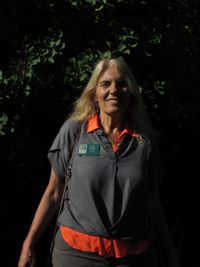Canary Palm Tree Growing: Care Of Canary Island Palm Trees


The Canary Island date palm (Phoenix canariensis) is a beautiful tree, native to the warm Canary Islands. You can consider planting a Canary Island date palm outdoors in U.S. Department of Agriculture plant hardiness zones 9 through 11, or indoors in a container anywhere. With its shiny, feathery fronds, arching branches, and ornamental fruit, this tree is not of the low-maintenance school. You’ll want to read up on the care of Canary Island palm trees to be sure the plant stays healthy and happy.
Information on Canary Date Palms
If you are dreaming of Canary palm trees growing in your backyard, you’ll need lots of room. Information on Canary date palms lists these trees as growing up to 65 feet (20 m.) tall with a potential spread of 40 feet (12 m.). However, planting a Canary Island date palm is not entirely out of the question if you have a small backyard. Canary palm trees growing speed is slow, and your specimen will only get to 10 feet (3 m.) tall during its first 15 years in the backyard. Other information on Canary date palms notes the long leaves of the species – from 8 to 20 feet (2-6 m.) long – and the extremely sharp spines at the frond base. The trunk can grow to 4 feet (1 m.) in diameter. Small white or gray blossoms produce showy, ornamental, date-like fruits in the summer.
Care of Canary Island Palm Trees
Planting a Canary Island date palm requires a full sun location and plenty of irrigation when the palm is young. As far as Canary palm tree care, think about providing water every week to help the plant establish deep roots. Once the tree is mature, you can reduce irrigation. Canary palm tree care includes feeding the tree. You’ll want to fertilize it every spring just before new growth appears. These trees need high levels of potassium and magnesium as part of Canary palm tree care. They can easily come down with deficiencies of these nutrients under landscape conditions. You’ll identify potassium deficiency by the pale color or spotting of the oldest fronds. As the deficiency progresses, the frond tips get brown and brittle. Your tree has a magnesium deficiency if you see lemon yellow bands along the outer margins of older leaves. Sometimes, the trees have both potassium and magnesium deficiencies at the same time. Fortunately, the palm usually has few disease or pest issues.
Sign up for the Gardening Know How newsletter today and receive a free copy of our e-book "How to Grow Delicious Tomatoes".

Teo Spengler is a master gardener and a docent at the San Francisco Botanical Garden, where she hosts public tours. She has studied horticulture and written about nature, trees, plants, and gardening for more than two decades, following a career as an attorney and legal writer. Her extended family includes some 30 houseplants and hundreds of outdoor plants, including 250 trees, which are her main passion. Spengler currently splits her life between San Francisco and the French Basque Country, though she was raised in Alaska, giving her experience of gardening in a range of climates.